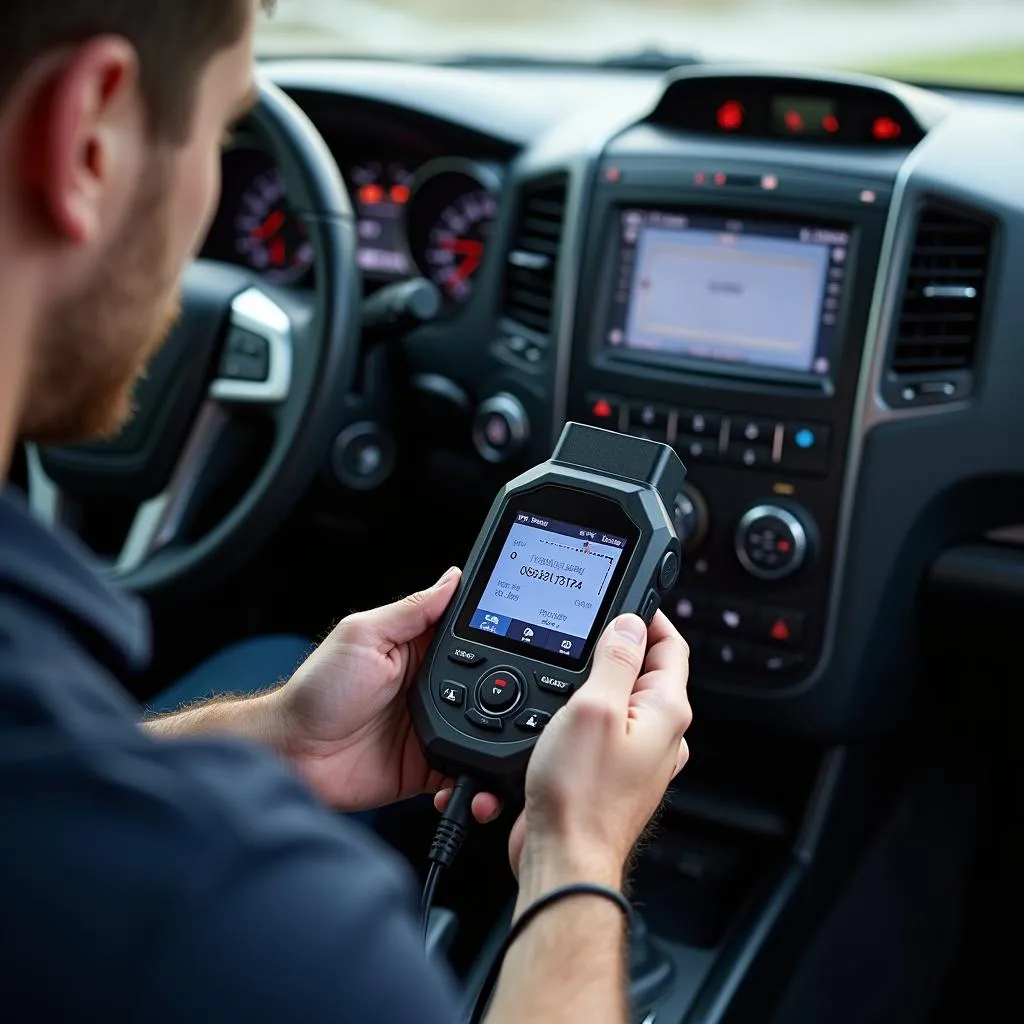Setting up a Raspberry Pi car radio with Bluetooth streaming capabilities opens up a world of audio customization and control. This guide dives deep into creating a versatile and personalized in-car entertainment system using a Raspberry Pi, focusing on achieving high-quality Bluetooth audio streaming.
Building Your Raspberry Pi Car Radio Bluetooth Stream System
What’s the allure of a DIY Raspberry Pi car radio? It’s about taking control of your car audio experience. Unlike traditional car stereos, a Raspberry Pi allows for endless customization, from the user interface to the audio sources. Bluetooth streaming is a crucial part of this, enabling wireless playback from your smartphone or other Bluetooth-enabled devices.
Choosing the Right Hardware for Your Raspberry Pi Bluetooth Car Radio
The foundation of your project is the Raspberry Pi itself. A Raspberry Pi 4 is recommended for its processing power and connectivity options, but a Raspberry Pi 3 or even a Zero 2 W can suffice for basic functionality. You’ll also need a compatible Bluetooth adapter, a power supply designed for automotive use, and a high-quality DAC (Digital-to-Analog Converter) for optimal sound output. Don’t forget an SD card for your operating system and software.
- Raspberry Pi: Raspberry Pi 4 (recommended), 3, or Zero 2 W
- Bluetooth Adapter: Choose one with low-latency aptX support for better audio quality.
- Power Supply: A reliable automotive power supply is crucial to prevent power fluctuations and potential damage to your Raspberry Pi.
- DAC: A dedicated DAC significantly improves the audio output quality compared to the built-in audio jack.
- SD Card: A high-speed SD card with sufficient storage (at least 16GB) is essential.
Software Setup for Raspberry Pi Bluetooth Audio Streaming
Choosing the right software is key. A popular and highly customizable option is Volumio, an open-source audiophile distribution specifically designed for Raspberry Pi. Alternatively, you can use other Linux distributions like Raspbian Lite and install necessary Bluetooth and audio software manually. This approach provides greater flexibility but requires more technical expertise.
Installing Volumio: Download the Volumio image and flash it onto your SD card. Once booted, Volumio provides a web-based interface for configuration and control. Simply enable Bluetooth and pair your device.
Manual Installation: If you choose a different distribution, you’ll need to install the necessary Bluetooth packages, configure the audio output, and potentially install a media player. This requires familiarity with the command-line interface.
Advanced Features and Customization
The real magic of a Raspberry Pi car radio is the customization potential. You can integrate internet radio, podcast streaming services, and even create your own custom user interface.
- Internet Radio: Access thousands of online radio stations through services like TuneIn.
- Podcast Streaming: Integrate podcast platforms to enjoy your favorite shows on the go.
- Custom User Interface: Develop a touch-screen interface tailored to your preferences using libraries like PyQt.
“A well-designed Raspberry Pi car radio surpasses factory-installed systems in both functionality and flexibility,” says Dr. Amelia Chen, a leading expert in automotive embedded systems. “The ability to integrate various online services and customize the user experience truly sets it apart.”
Troubleshooting Common Issues
Encountering issues? Here are some common problems and solutions:
- Poor Audio Quality: Check your DAC settings and ensure you are using a high-quality audio output. Consider using a ground loop isolator to eliminate noise.
- Bluetooth Connection Problems: Ensure your Bluetooth adapter is compatible with your Raspberry Pi and that the drivers are correctly installed.
- Power Issues: Use a reliable automotive power supply and check for loose connections.
“Troubleshooting often involves checking the basics,” adds Dr. Chen. “Ensuring proper grounding and stable power delivery are fundamental to a reliable system.”
Conclusion
Building a Raspberry Pi car radio with Bluetooth streaming capabilities is a rewarding project. It provides a truly personalized and versatile in-car entertainment system. By carefully choosing your hardware and software, and following the steps outlined in this guide, you can enjoy high-quality Bluetooth audio streaming in your car. Start building your dream car audio system today!
FAQ
- What is the best Raspberry Pi for a car radio? A Raspberry Pi 4 offers the best performance, but a Pi 3 or Zero 2 W can work for simpler setups.
- Do I need a DAC for my Raspberry Pi car radio? A DAC significantly improves audio quality and is highly recommended.
- What software can I use for Bluetooth streaming? Volumio is a user-friendly option, while manual installation provides greater flexibility.
- How do I troubleshoot poor audio quality? Check your DAC, grounding, and power supply.
- Can I integrate internet radio and podcasts? Yes, a Raspberry Pi car radio allows for integration with various online services.
- What are the advantages of a Raspberry Pi car radio? Customization, flexibility, and the ability to integrate various features.
- How do I power a Raspberry Pi in a car? Use a reliable automotive power supply designed for 12V DC input.

